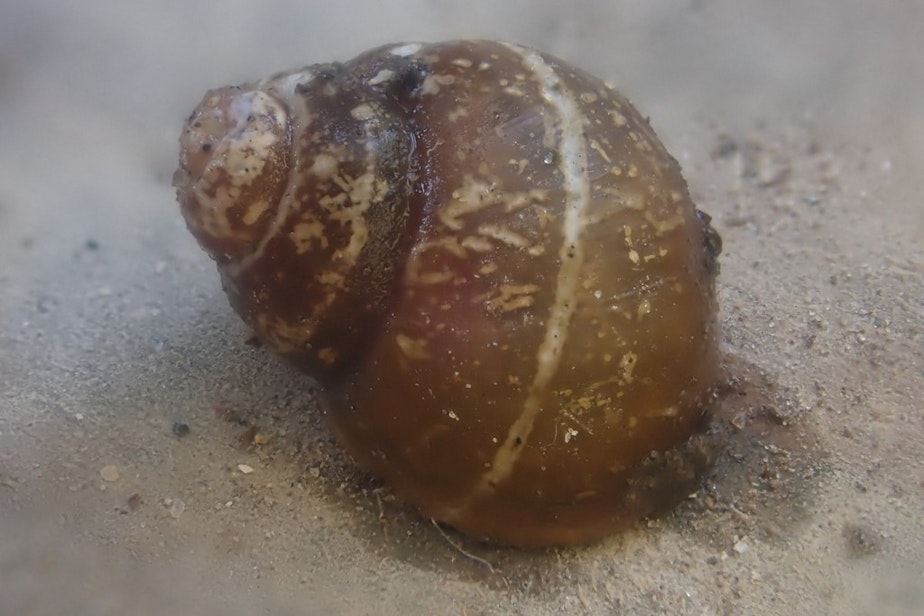These Northwest snails might need stronger protection than just their tiny shells

Environmentalists are urging federal officials to save a pair of Northwest species that you’ve probably never heard of.
If you’ve seen one of them, you might have mistaken it for a pebble on the bottom of a clear-flowing creek.
While salmon get most of the attention, less-charismatic species lose out, too, when Northwest rivers are dammed or damaged.
Two tiny, freshwater snails that thrive in cold, clean, oxygen-rich water have been eliminated from most of the Columbia River Basin, according to the Center for Biological Diversity:
• The ashy pebblesnail. It has pale circles around its tentacled eyes.
• The shortface lanx. It looks like a tiny volcano with its cone-shaped shell.
These tiny snails, less than half an inch tall or wide, still cling to the bottom of a handful of rivers like the Methow in Washington and the Deschutes in Oregon.
The activist group has petitioned the U.S. Fish and Wildlife Service to protect these rare little mollusks.
RELATED: Looking back and looking ahead: the 50-year anniversary of the Endangered Species Act
The shortface lanx is sometimes called the giant Columbia River limpet, though it’s neither giant nor a limpet. It sits on its own branch of the evolutionary tree, being the only species in its genus.
The ashy pebblesnail has no lungs and requires the highly oxygenated environment of clear, cold, flowing water to breathe, as well as a stable, rocky bottom to cling to.
Threats to the ashy pebblesnail include water pollution, habitat loss and degradation, and isolation of its increasingly fragmented populations, according to the Washington Department of Fish and Wildlife.
RELATED: Okanagan River salmon eyed for endangered-species protection
The center's formal petition calls both species "strong indicators of stream health."
“It’s not too late to save the shortface lanx and ashy pebblesnail,” the petition states. “We must do more to protect and restore rivers and streams in the Columbia Basin from the headwaters to the mouth for the welfare of wildlife and humans alike.”
Under the Endangered Species Act, the wildlife service has one year to respond to the center’s petition.
As far as scientists have been able to document, more mollusks have gone extinct worldwide in modern times than any other type of animal.
North America has more than 700 species of freshwater snails, with most of them considered vulnerable, threatened, or in danger of extinction by scientists.


